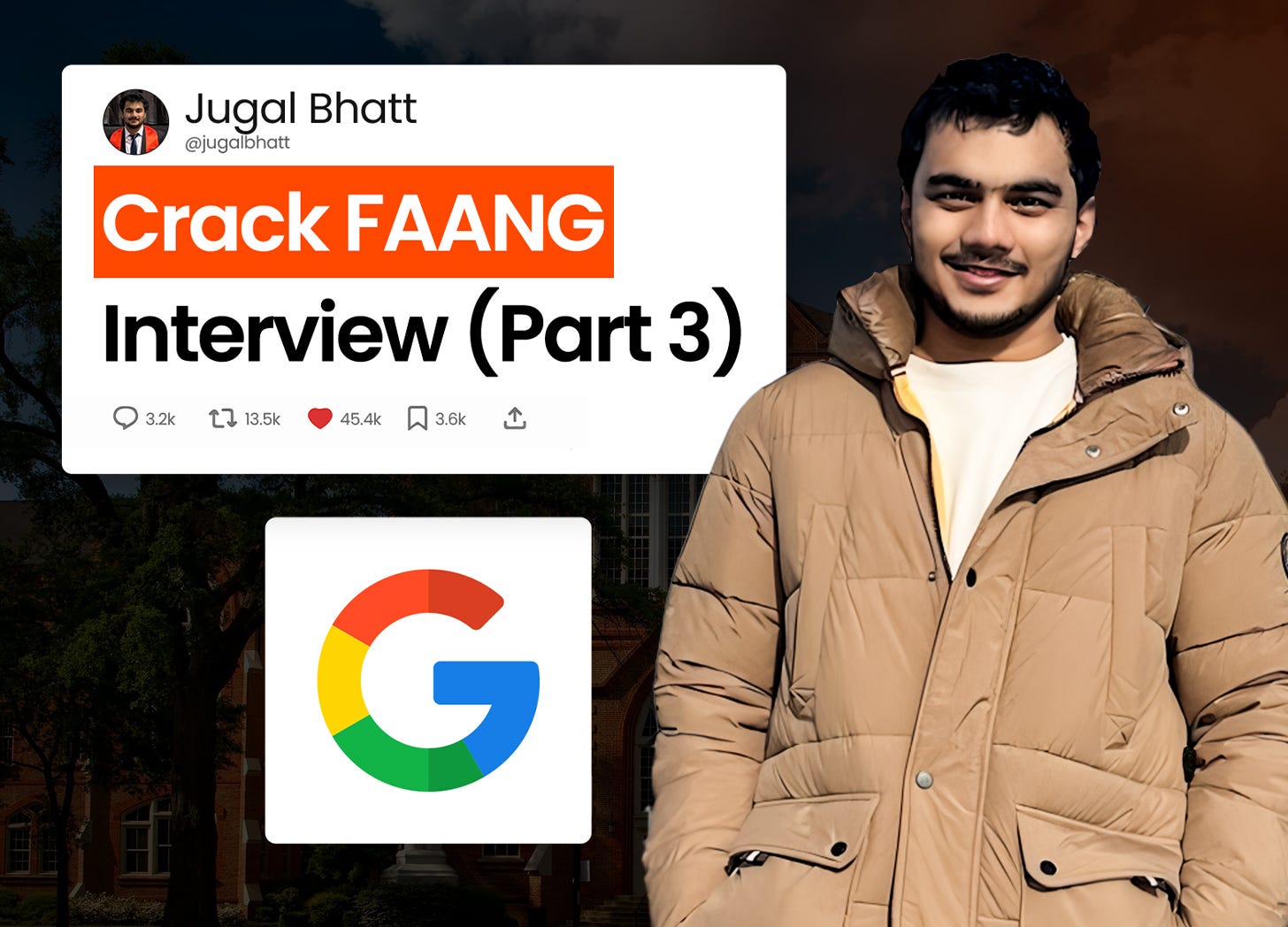Last month, I interviewed at Google, and the entire process challenged how I think about algorithms, systems, and structured problem-solving.
FAANG interviews are tough, but they're not unpredictable.
If you understand what each company prioritizes (e.g., Google = recursion, trees, DP-heavy), you can create a strategy that’s not just efficient but effective.
This isn’t about grinding 300+ problems randomly.
It’s about solving the right patterns, using real interview tags, and following a 5-week plan based on what companies actually ask.
In Part 3, we’ll break down Google
Google
Key Question Patterns & Company Focus
Graphs & Trees (search indexing, map routing)
Dynamic Programming & Bit Manipulation (low-level, large-scale optimizations)
Hash Tables & Arrays/Strings (quick lookups, large data sets)
Mathematical Puzzles & Number Theory (common in Google interviews)
Depth & Rigor: Google expects deep edge-case reasoning, proofs of correctness, and discussing trade-offs.
Resource List
Books
Online Platforms & Tags
Articles & Blogs
“How to Prepare for Google SDE Interviews”
YouTube Channels & Playlists
NeetCode (@NeetCode) – search “NeetCode Google”
TechLead (@TechLead) – search “TechLead Google interview tips”
5-Week Training Plan
Week 1 – Arrays, Strings & Bit Manipulation
Goals
Master fundamental array & string operations (two-pointer, sliding window)
Cover bitwise operators (XOR, shifts, bit masks) in common puzzles
Problems (12 Easy/Medium)
Study Actions
Practice common bitwise patterns (XOR swap, bit counting)
Time solves: Easy ≤ 10 min, Medium ≤ 20 min
For each problem, write expected bit operations (e.g., mask = mask << 1 | bit)
Week 2 – Trees & Binary Search Trees
Goals
Master binary tree traversals, BST invariants, balanced vs. unbalanced trade-offs
Prepare to discuss tree height, recursion depth, tail recursion
Problems (10 Medium)
Study Actions
Draw random BSTs and manually verify inorder is sorted
Write down conditions for balanced vs. unbalanced; discuss space trade-offs
Week 3 – Graphs & BFS/DFS
Goals
Master adjacency list/matrix, BFS/DFS on directed/undirected graphs
Cover cycle detection, topological sort, shortest path (Dijkstra, Bellman-Ford)
Problems (10 Medium/Hard)
Study Actions
Write both DFS (recursive) and BFS (queue) from scratch in ≤ 20 minutes each
For each problem, annotate when to use adjacency list vs. matrix
Week 4 – Dynamic Programming & Bitmask DP
Goals
Master 1D/2D DP, bitmask DP for small n (≤ 20)
Cover DP on trees (Tree DP) commonly asked by Google
Problems (10 Medium/Hard)
Study Actions
Write bitmask DP for TSP-style problems (n ≤ 20) on paper
Identify when recursion + memoization is faster than bottom-up
Discuss space reduction (rolling arrays) for 2D DP
Week 5 – Mock Interviews & Feedback Loop
Goals
Simulate 3 timed “Google” mocks (45 minutes each)
Emphasize proof of correctness and discussion of edge cases/optimizations
Actions & Platforms
Peer Mock: Rotate roles; maintain strict time
Online Mock:
Pramp – search “Google”
Interviewing.io – filter “Google”
Self-Review:
List problems that took > 30 minutes
Re-solve those in ≤ 25 minutes
Record a 2-minute “proof sketch” audio explaining time/space trade-offs
Final Thoughts
The truth is that every FAANG company follows a repeatable pattern, once you study their previous interviews and product-specific needs.
Use this breakdown like a GPS: you still have to drive, but you’ll always know the fastest route.
Until next week,
Jugaldb


